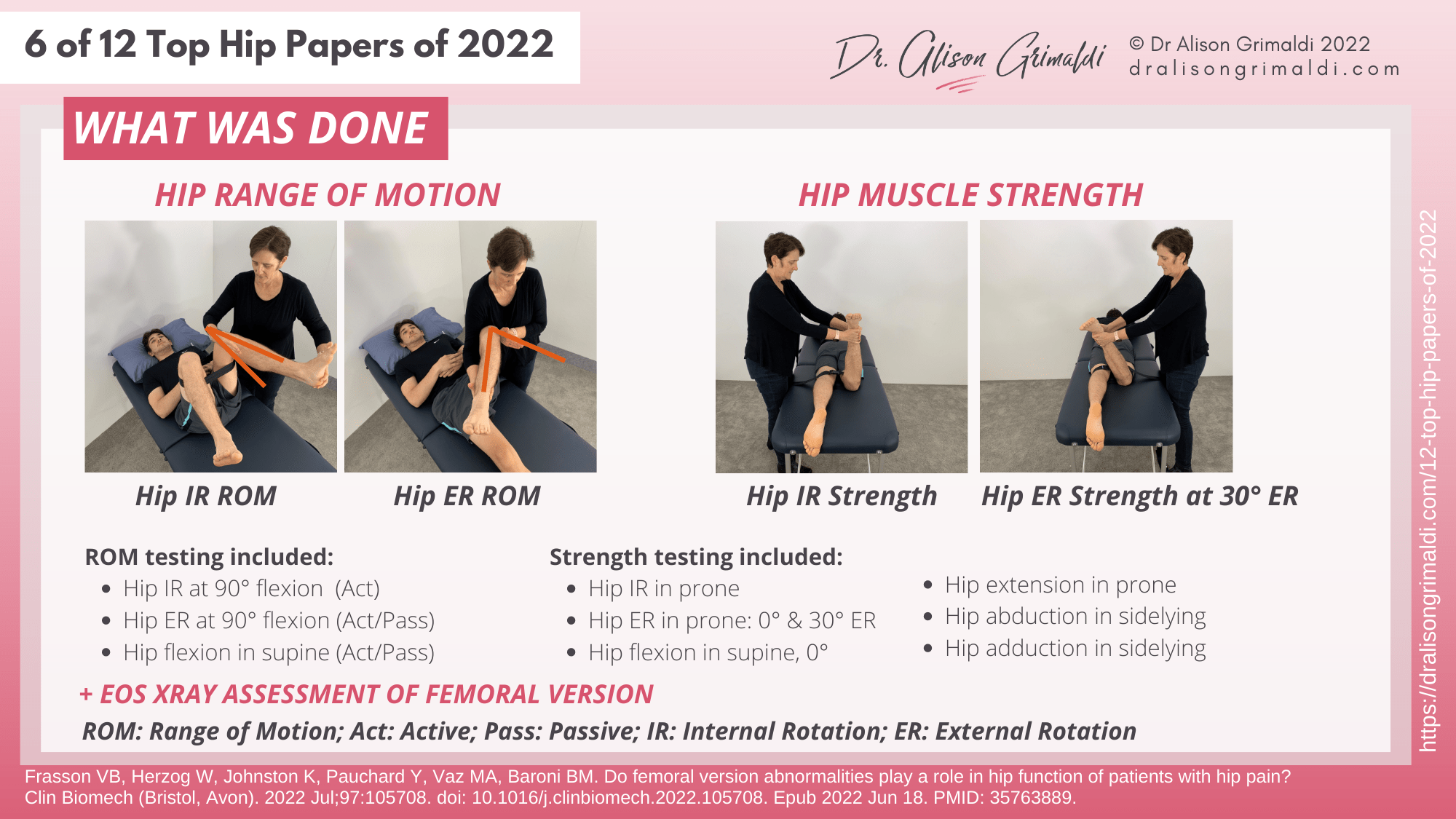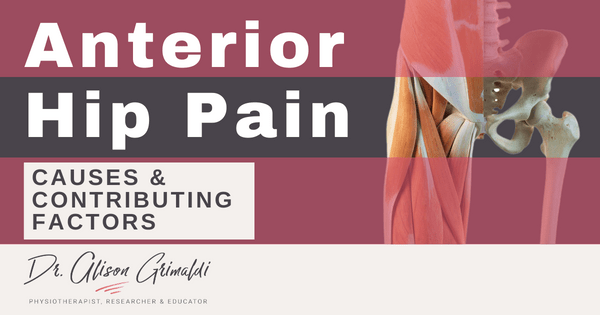6 of 12 Top Hip Papers of 2022 | Femoral version and hip function

Half way already! It's Day 6 of my series of miniblogs featuring 12 top hip papers from 2022. Hope you've enjoyed the first 5. If you missed Day 5, you'll find a link at the bottom of this page to take you back.
For day 6 we'll be taking a look at a paper that investigated the link between femoral version and hip function. Does femoral malversion make a difference, or can we safely ignore it? Read on to find out.

6 of 12 Top Hip Papers of 2022: Do femoral version abnormalities play a role in hip function of patients with hip pain?
Femoral malversion may induce challenging loads across the hip joint, and have wider impact down the kinetic chain. For a bony variation with so much potential impact, it is still under-recognised, there are no universally agreed thresholds and still much to learn about it's relevance, clinical assessment and management.
This paper, published in June 2022, investigated the relationship between femoral version, hip range of motion (ROM) and muscle strength in those with hip pain. This adds new information that helps clinicians detect femoral malversion and understand the links between femoral version and hip function.
Study Aim:
To compare hip range of motion and muscle strength in patients with hip pain and different femoral version. Additionally, to determine if clinical assessment tools for measuring hip range of motion can predict femoral version in patients with hip pain.
What was done:
- Pre-operative assessments were performed for 31 patients (15 females, 29 ± 1.17 years) with joint related hip pain who were scheduled for arthroscopic surgery.
- Clinical assessments included:
- hip rotation range at 90°,
- hip flexion range of motion,
- hip muscle strength in all planes, in a neutral (0°) joint position, and
- hip external rotation strength in prone at 30° external rotation.
(See the graphic below for details)

This group used the femoral version thresholds that have been more recently suggested by others:
- Normal femoral version: 10-20° anteversion
- Excessive femoral anteversion: >20° anteversion
- Femoral retroversion: < 10° anteversion
The round numbers certainly make things easier!
This group also developed a novel index, they called the Hip Rotation Index.
Hip Rotation Index = External Rotation - Internal Rotation.
The rotation index was calculated on active vlaues only, as passive internal rotation at 90° flexion was not reliable to collect with a single assessor. It would be valuable to also test this index on passive range of motion measures collected in prone, which would be more reliable with a single assessor.

Key Findings:
- Anteverted hips had greater hip internal rotation range of motion
- Retroverted hips had greater hip external rotation range of motion
- Femoral version was strongly correlated with hip rotation range of motion
- >70% chance of anteversion if the rotation index was <11°
- >70% chance of retroversion if the index was >40°
- Anteverted hips were weaker than retroverted hips for:
- external rotation at 30°,
- abduction, and
- adduction
- Anteverted hips were weaker than normal for hip extension
Clinical Implications:
- Hip rotation range provides a clinical indication of femoral version
- The hip rotation index may be a useful clinical tool to assess likelihood of femoral malversion
- Those with anteverted hips will likely be weaker at 30° of external rotation (measured by tibial/knee position), as the hip is actually in relatively greater external rotation
- this means the external rotator muscles will be shortened and disadvantaged.
- this end range position will also load anterior joint structures and may result in pain inhibition or protective behaviours.

Morphological variations in femoral torsion are often overlooked. However, femoral malversion can be highly impactful. Using hip range of motion and easy to remember thresholds like these, may make it easier to quickly incorporate femoral version assessment into clinical practice.
Excessive anteversion was shown to have a significant impact on rotator muscle function in a position of external rotation, so consider this when muscle/functional testing and prescribing exercise. It is important to screen for femoral malversion and consider femoral morphology in interpretation of assessment findings and development of your treatment strategy, both in terms of load management and exercise therapy.
Another great Anterior Hip Pain blog

Anterior Hip Pain: Causes & Contributing Factors
Adequate consideration of individual causes and contributing factors is important for best outcomes.
Like to learn more about assessment and treatment of patients with femoral malversion?
In my anterior hip and groin pain online course, you can find detailed information on the impact of femoral malversion, how to measure it in clinic and things to consider when provide therapeutic exercise or manual therapy for those with femoral malversion and hip pain. You might also like to come along to a practical or online workshop - Anterior Hip and Groin Pain - to supercharge your clinical skills! 2023 workshops open for booking now.
This online course is included in Hip Academy and Hip Academy members receive discounts for online workshops.
I hope you enjoyed the infographics and key learnings from Day 6 of my 12 Top Hip Papers of 2022. There are 6 more papers to come, so stay tuned and return to the blog page each day to see what other top papers and infographics I have for you!
If you missed yesterday's Hip Paper, click the link below to catch up!



